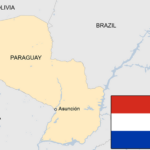Dr. Aisha Ahmad is an assistant professor of political science at the University of Toronto, and the director of the Islam and Global Affairs Initiative at the Munk School. She’s also chair of the board of Women in International Security Canada. During her time in conflict zones, she has been stuck in a home for days and days, sometimes months at a time, in order to reduce her chances of being killed by gunfire or a bomb. She sees parallels in that experience and people who are currently adhering to quarantine: they are scared, but mostly, they are bored and anxious to DO something, just as people are in war zones stuck in a home. In those experiences, she learned that one of the most therapeutic things she could do was go outdoors.
She’s featured in this profile, Lessons from a war zone: How to emotionally survive and flourish in the pandemic.
“In places where there has been gunfire outside my window, the ubiquitous threat of terrorism and kidnapping, even still, I needed to go walk in green space, because the internal distress of being confined — the green space was a magical remedy.”
I so get it. As I’ve mentioned, I’ve been fine in the pandemic world, because it’s not that different from my pre-pandemic world, and I get to walk around a beautiful, empty neighborhood with my dog every day. But her column made me remember Afghanistan in 2007, when my life was confined to my guesthouse room, my office, and an SUV seat getting me there and back. I spent eight weeks and then went on my “mental health leave” that’s required of all UN workers in conflict zones, a leave I thought was frivolous before deployment. That first eight weeks of confinement almost broke me. I almost quit. But some harsh, stark advice from a friend in Spain snapped me out of it, made me realize what my priorities should be, and I went back after that break with a completely different attitude, and that attitude got me through the next four months.
But also… what got me through was some carefully planned outdoor trips… one was a trip to a lake. One was a walk around a high school running track. One was a walk to a wood-working shop. And one was another trip to that lake. Those few outdoor experiences in those six months got me through and, thankfully, were worth the risks.
She wrote this article, How to Salvage a Disastrous Day and it’s also excellent: realistic, not “chirpy.”
I’ve got this. You do too.












Leave a Reply